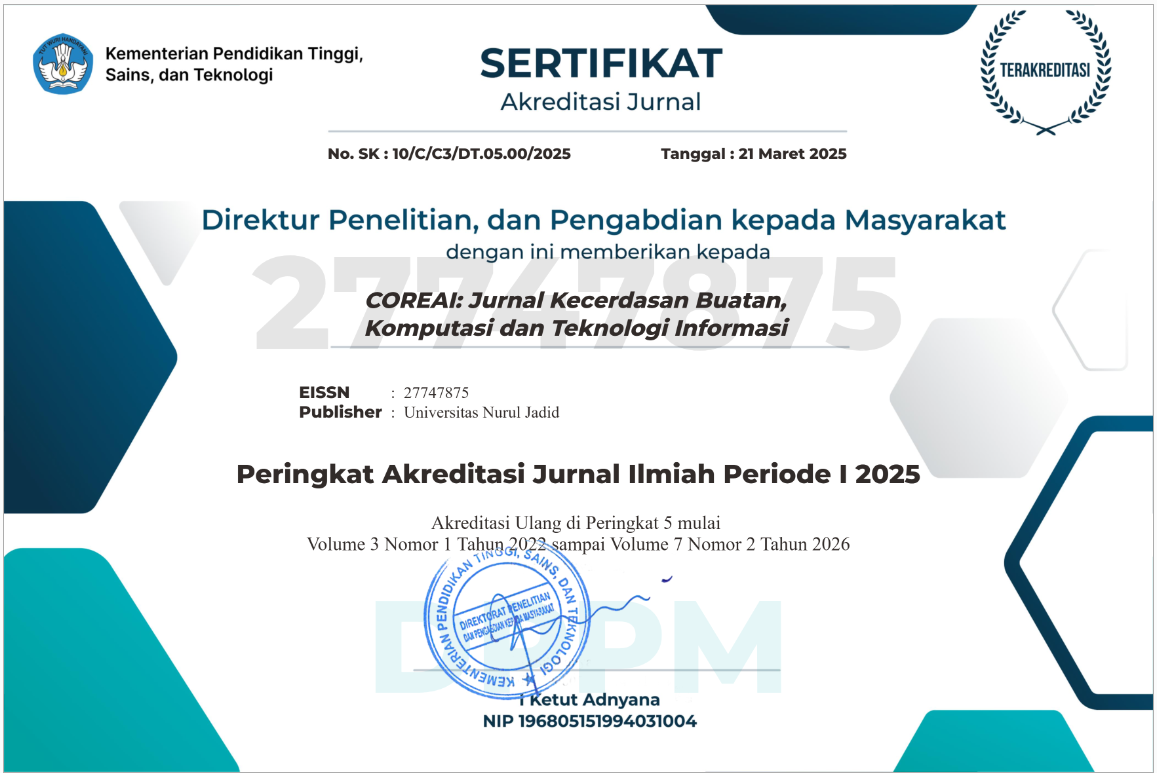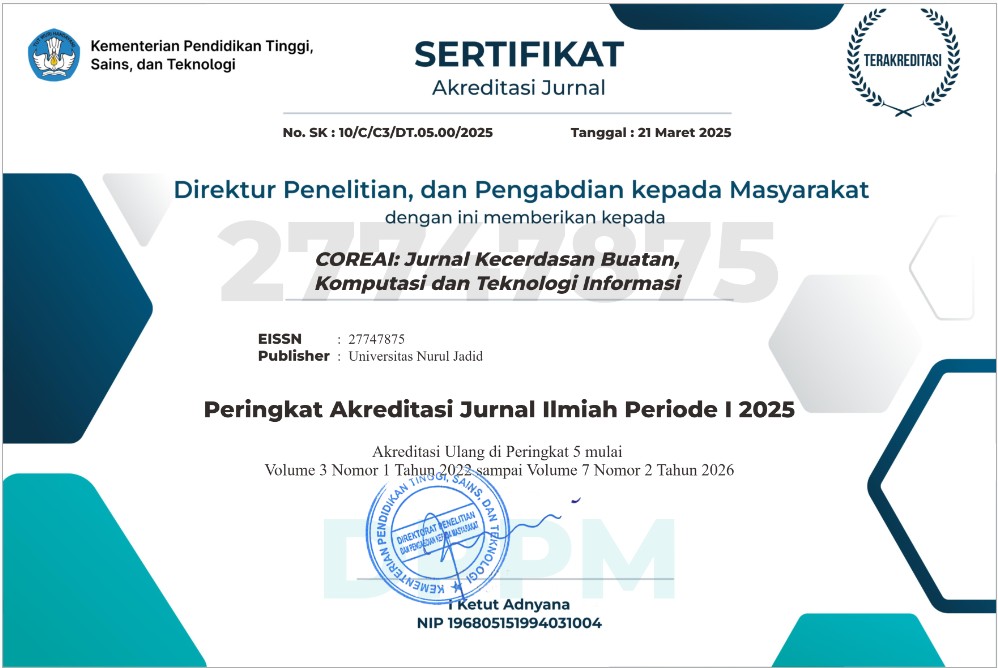Sentiment Analysis of Netflix Reviews on Goggle Play with Machine Learning
Authors (s)
(1) * Andi Wijaya
 (Universitas Nurul Jadid)
(Universitas Nurul Jadid) Indonesia
(2) Muhammad Alvin Dwiyanto (Universitas Nurul Jadid)
Indonesia
(3) Zainul Muttaqin ()
(*) Corresponding Author
AbstractPenelitian ini bertujuan mengklasifikasikan sentimen pengguna terhadap aplikasi Netflix di Google Play Store, mengatasi tantangan volume ulasan dan keragaman bahasa. Analisis sentimen otomatis diperlukan untuk mengekstraksi informasi emosional dari teks ulasan. Sebanyak 20.000 ulasan dikumpulkan menggunakan web scraping. Data kemudian melalui tahap praproses seperti case folding, cleaning, tokenizing, dan stopword removal. Klasifikasi sentimen berbasis leksikon dilakukan dengan menerjemahkan teks Indonesia ke Inggris menggunakan Google Translate, lalu dianalisis VADER Sentiment Intensity Analyzer. Pembobotan kata diterapkan menggunakan TF-IDF untuk menentukan signifikansi kata dalam dokumen. Perbandingan hasil klasifikasi sentimen dilakukan menggunakan algoritma Support Vector Machine (SVM) dan Naive Bayes. Hasil menunjukkan SVM mencapai akurasi 82%, presisi 83%, recall 89%, dan skor F1 86%. Naive Bayes menghasilkan akurasi 76%, presisi 74%, recall 94%, dan skor F1 83%. Secara keseluruhan, SVM terbukti lebih unggul dalam memberikan klasifikasi sentimen yang seimbang dan akurat dalam studi ini
|
Keywords
Netflix; Analisis Sentimen; Naive Bayes; Support Vector Machine;
Full Text: DOWNLOAD PDF
Refbacks
- There are currently no refbacks.
Copyright (c) 2025 Andi Wijaya

This work is licensed under a Creative Commons Attribution-NonCommercial-ShareAlike 4.0 International License.

This work is licensed under a Creative Commons Attribution-NonCommercial-ShareAlike 4.0 International License.
COREAI: Jurnal Kecerdasan Buatan, Komputasi dan Teknologi Informasi
Published by Technic Faculty of Nurul Jadid University, Probolinggo, East Java, Indonesia.








